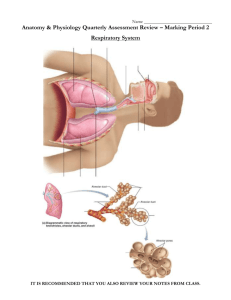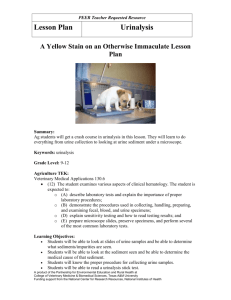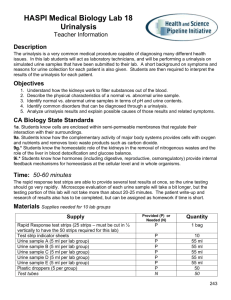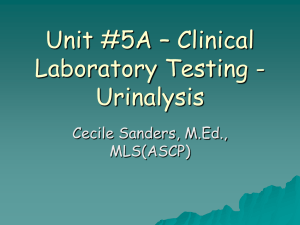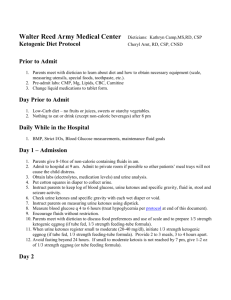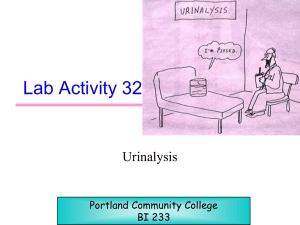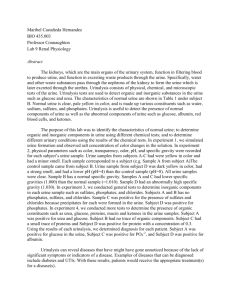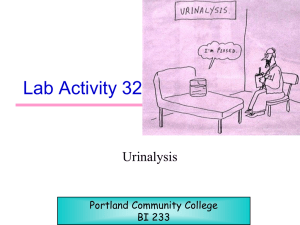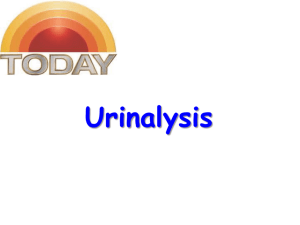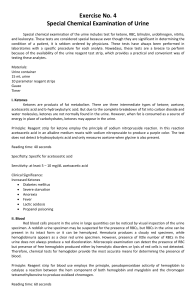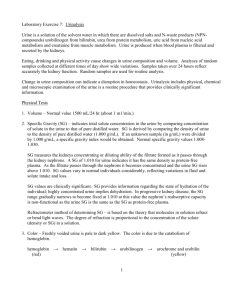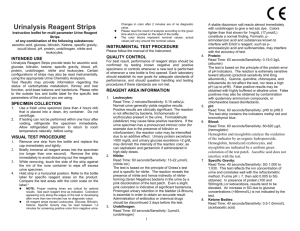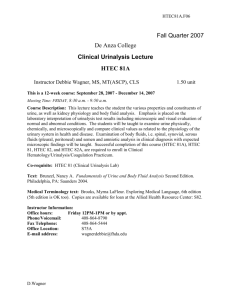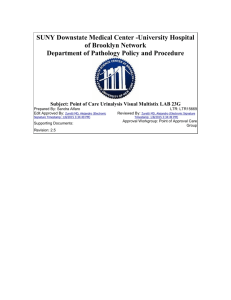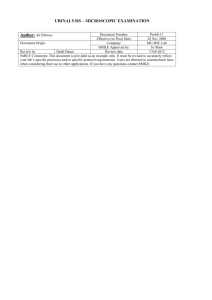(19) Urinalysis
advertisement
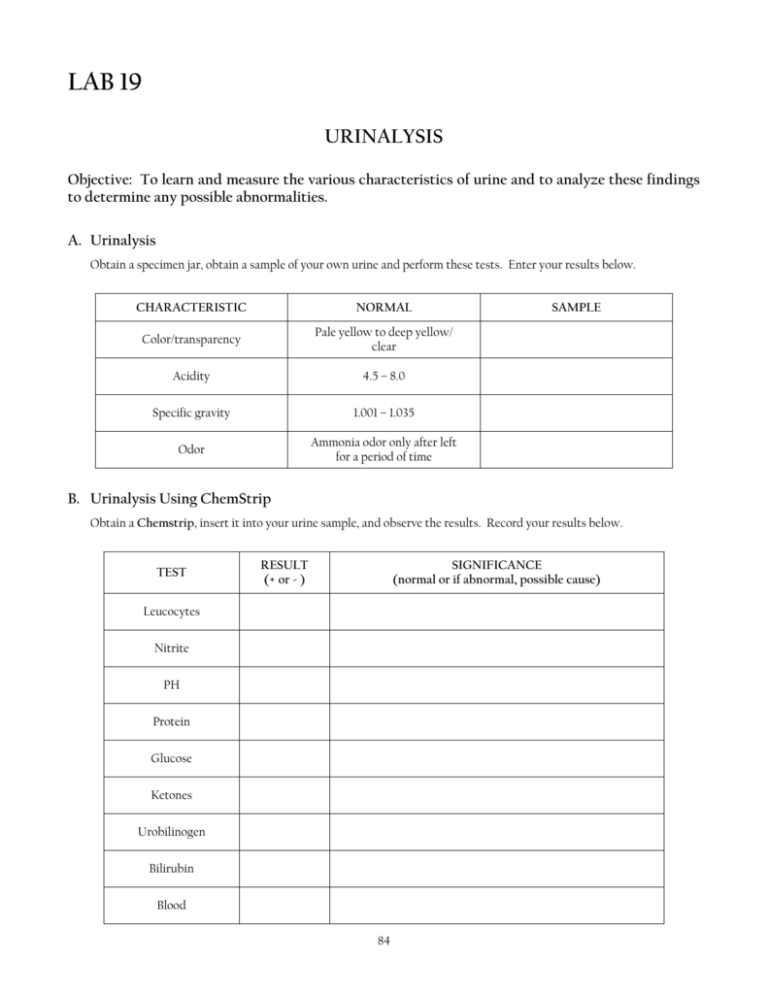
LAB 19 URINALYSIS Objective: To learn and measure the various characteristics of urine and to analyze these findings to determine any possible abnormalities. A. Urinalysis Obtain a specimen jar, obtain a sample of your own urine and perform these tests. Enter your results below. CHARACTERISTIC NORMAL Color/transparency Pale yellow to deep yellow/ clear Acidity 4.5 – 8.0 Specific gravity 1.001 – 1.035 Odor Ammonia odor only after left for a period of time SAMPLE B. Urinalysis Using ChemStrip Obtain a Chemstrip, insert it into your urine sample, and observe the results. Record your results below. TEST RESULT (+ or - ) SIGNIFICANCE (normal or if abnormal, possible cause) Leucocytes Nitrite PH Protein Glucose Ketones Urobilinogen Bilirubin Blood 84 C. Urinalysis of Unknown Urine Samples Perform the same tests as above on the unknown urine samples and determine any abnormalities and possible causes. Use the table on page 86 to record your results. D. QUESTIONS 1. Were any of the urine samples abnormal? If so, which ones? 2. What would most likely be the cause of a urine sample with a positive test for nitrites, leukocytes and a slightly higher than normal pH? 3. Are proteins or blood normally found in urine? If they are present, how might they get there? 4. If the urine sample tests positive for ketones and glucose, for what disease should the patient be checked? 5. Elevated levels of urobilinogen and bilirubin may indicate problems with what organ? 6. What dietary habits may cause an acidic urine sample (more acidic than normal)? What would cause a basic urine sample? E. Microscopic Examination of Sediments If available in your lab, observe the demonstration slides of urine sediments. 85 Sample Specific Gravity pH Leukocytes Nitrite Protein Glucose Ketones Urobilinogen Bilirubin Blood Color & Transparency Control Normal = 1.01 - 1.040 Normal = pH 5-9 Avg. = 6 Normally Negative Positive = >25 cells/L Normal = <0.05 mg/dL Positive = >0.05 mg/dL Normal = <30 mg/dL Positive = >30 mg/dL Normal = Negative Positive = >90 mg/dL Normal = <10 mg/100 mL Positive = >10 mg/100 mL Normal = <0.4 mg/dL Positive = >0.4 mg/dL Normal = <0.05 mg/dL Positive = >0.05 mg/dL Normal = <5 cells/L Positive = >5 cells/L Straw, yellow or amber A B C Causes Yours D renal failure, vomiting, diet, obstruction + UTI renal disease diabetes diabetes CHF hyperthyroid fever gout renal disease weight loss 86 renal disease cirrhosis Sickle cell Liver damage diverticulitis Liver damage Hemolytic dis injury ++






